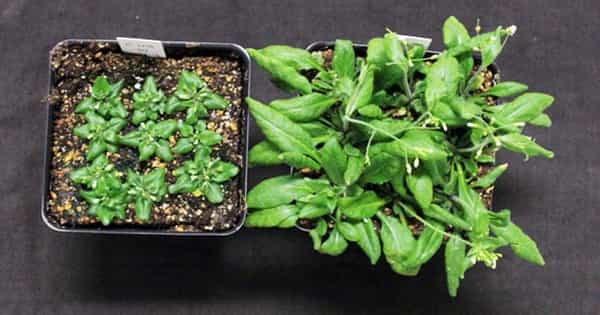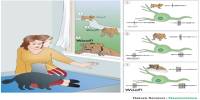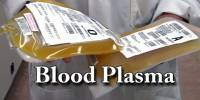Scientists trying to figure out how plants produce and accumulate oil have discovered a new essential component of the assembly line. They identified a specific sterol, a molecule related to cholesterol that is important in the formation of oil droplets. The findings could lead to new approaches for engineering the oil content of various plant tissues, with applications in bioenergy, chemical engineering, and nutrition.
“This research greatly expands our understanding of the molecular factors that govern the formation of lipid droplets, which are vital organelles for oil storage and metabolism in all eukaryotic organisms,” said Changcheng Xu, the study’s lead author and a biologist at the US Department of Energy’s Brookhaven National Laboratory. The findings, which were published in Nature Communications, may point to new ways to manipulate the oil content of various plant tissues.
The findings could be particularly useful in informing genetic engineering strategies aimed at increasing the oil content of leaves and stems. These plant tissues do not normally accumulate oil, but scientists believe they could be engineered to provide an abundant source of sustainable oils for the production of biofuels and other commodity products.
The findings are also applicable to the accumulation of oil in plant seeds, which is the primary location where oils naturally accumulate in plants. These natural plant oil reservoirs feed plant embryos and seedlings, as well as animals and humans. “We discovered that a lack of a specific type of sterol causes a decrease in oil accumulation in seeds and leaves,” Xu explained.
Scientists seeking to unravel the details of how plants produce and accumulate oil have identified a new essential component of the assembly line. They discovered a particular sterol, a molecule related to cholesterol that plays a key role in the formation of oil droplets.
Greenlight for oil production
For years, Xu and his colleagues have been working to increase oil accumulation in plant leaves and stems. “Leaves are much more abundant as a potential bioenergy material than seeds,” he observed. “In addition, because the oil in seeds is used for food, we’re working to accumulate oil and other commodity bioproducts in non-seed parts of plants, such as leaves and stems, to avoid food-fuel competition.”
Using the common laboratory plant Arabidopsis, the team has made some progress in getting leaves to accumulate significant amounts of oil. They devised an ingenious method for tracking oil accumulation. They used genetic engineering to create Arabidopsis plants that always have a green fluorescent protein attached to a protein called oleosin. Oleosin is only found on the surface of lipid droplets. It is a component of the membrane that surrounds these oil-storage compartments within cells, helping to stabilize them. If lipid droplets are present in a plant tissue sample (leaf, stem, or seed), they appear as small green dots under a fluorescence microscope.

“We used a mutagen to try to trigger mutations that would increase oil accumulation in our Arabidopsis plants,” Xu explained, using the fluorescence technique to identify strains with more and/or larger green dots. Ironically, they discovered sterol in an Arabidopsis strain that produced almost no oil.
“The current work’s main goal was to figure out which genetic modification caused this dramatic drop in oil accumulation,” Xu explained. “We hoped that identifying this gene would lead to the discovery of new genes/proteins involved in the formation or accumulation of lipid droplets.”
Clues to interior assembly
Scientists know that lipid droplets form in the “endoplasmic reticulum,” or ER, of cells at the microscopic level. That’s an internal network of membranes within cells (not the membrane surrounding the cell) that functions as a factory, assembling and packaging various materials like proteins and lipids.
When oil begins to accumulate between the two layers of the ER membrane, lipid storage droplets form, but only in certain regions of the ER. When there is enough oil present, the little membrane bits pinch-off, encapsulating the oil in self-contained compartments.
As the Brookhaven study demonstrates, studying a plant that does not accumulate these lipid droplets can provide clues to the biochemical factors that drive the process – as well as what is unique about the specific ER domains where it occurs.
Zeroing in on the gene
The Brookhaven team used a technique known as positional cloning to determine which mutation caused the dramatic drop in oil accumulation. Positional cloning is a method of searching every region of chromosomes to pinpoint a specific gene that is responsible for a characteristic of interest. The method focused the search on a specific region of one of the plant’s chromosomes.
“Hundreds of candidate genes remain in this region,” Xu said. The team identified a gene they suspected was involved after using whole-genome sequencing to search for any mutations in this region. The gene encodes an enzyme that performs one biochemical step in the multi-step synthesis of sterol, a molecule similar to cholesterol found in the ER and other cellular membranes.
The scientists were able to replicate the effect of the mutation by selectively “knocking out” the normal (unmutated) version of this gene. Plants with the gene knocked out, on the other hand, accumulated no lipid droplets. Furthermore, reintroducing the unmutated gene restored oil droplet accumulation.
“This experiment demonstrated unequivocally that sterol is essential in the formation of oil droplets,” Xu said. But the scientists went one step further. They also investigated what would happen if they mutated the genes for enzymes “upstream” of this specific enzyme in the multi-step sterol synthesis pathway. They also measured the sterol levels in these mutants.
They were able to zero in on the specific type of sterol that, when deficient, results in low oil accumulation thanks to the extensive research. Oil accumulation in leaves and seeds was reduced when the same genes were mutated. The scientists also conducted quantitative studies of the shapes and sizes of lipid droplets in seeds, where they are easier to see.
The findings show that this sterol plays a universal role in the formation of lipid droplets. “We believe this sterol is critical for the formation of a microdomain in the ER membrane involved in the formation of lipid droplets,” Xu said. “A sterol deficiency causes a flaw in the formation of such a microdomain.”
Now that scientists know what happens when these genes are turned off, they propose that strategies to turn them on and increase their expression could be one way to increase oil accumulation in leaves, stems, or seeds. In future experiments, the team will investigate these strategies.
















